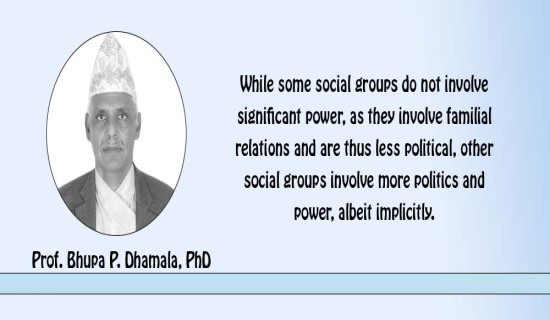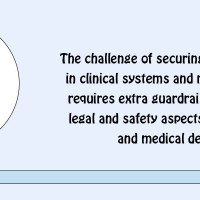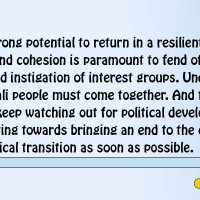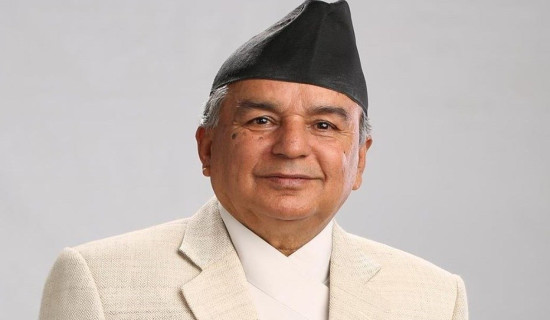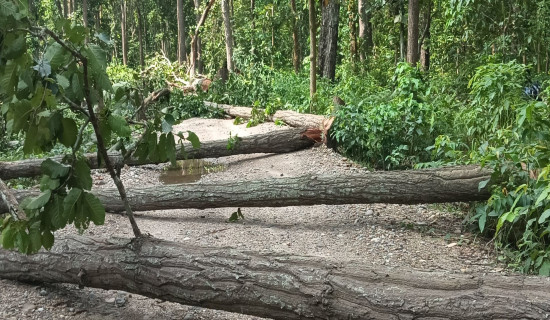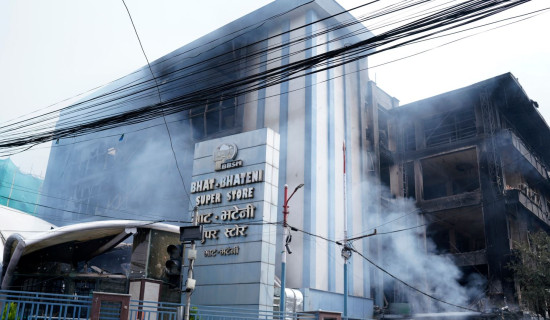- Saturday, 13 September 2025
Travel In Dashain: A Trying Experience
Every rainy season and festival time highlight the deterioration of our transportation infrastructure and the problems that Nepali travellers face. Nepalis going to their hometowns to celebrate the main holiday of Bada Dashain have encountered a double whammy this festival season. Recent torrential rains have damaged roads, highways, and bridges around the country, making it difficult for many Nepalis to go home. The challenge increases when we pore into the status of transportation - buses, minibuses or microbuses, as well as planes. Despite repeated requests for improvement, Nepali commuters experience challenges because of a transportation system that is not only fraught with dangers but also humiliating to many physically challenged.
The monsoon, a natural phenomenon, exacerbates the condition of our roads and transportation systems. For example, our authorities implemented a law that they were unable to execute, resulting in the deaths of numerous people on the Prithvi Highway owing to their incompetence. Despite requests to prevent night travel on several roadways during the rainy season, they failed to execute this rule resulting in deaths of many commuters. Because buses that travelled during night time when torrential rains were lashing the area were buried by landslides, killing many passengers and wounding many more. These occurrences underscore the deplorable state of road travel in our nation, where numerous of our roadways are poor and suffer the worst when monsoon rains regularly pound them.
Fatalities
Year after year, landslides obstruct important highways like as the Prithvi, Arniko, and Karnali, leaving passengers stuck or, worse, causing fatalities. Meanwhile, in the Tarai, floods turn roads into streams, rendering movement impossible. And, as is often the case, the authorities' sluggish response exacerbates the situation for the passengers. Authorities only act after huge harm has occurred. When a natural disaster strikes the country, they take action due to pressure from the public, the media, and civil society.
Meanwhile, as if the natural disasters of the monsoon weren't enough, festival seasons have their own set of obstacles. Dashain, Tihar, and Chhath saw massive crowds, but our public transport infrastructure is unprepared for the rush. Overcrowded buses, irregular timetables, increased ticket costs, and a general disregard for passenger and bus safety have been commonplace over the years. During festivals, bus operators pack passengers into buses that ply on difficult routes across steep, rugged terrains, risking both the vehicles and the lives of the passengers. The daily condition of buses and other public transport services only exacerbates the trip experience. Most buses are maintained poorly and they lack of basic facilities, let alone adhering to safety precautions, which lead to a bad travel experience.
During festival season, the Gongabu Bus Park in Kathmandu, one of the busiest terminals in the country, becomes a chaotic sight with overcrowded people. Microbuses, minibuses, and taxis aren't any better. Very few buses and minibuses provide amenities such as adequate seats and air conditioning, but with increased tickets prices. Many of them are rarely on time and give inconsistent and unexpected service. For elderly, crippled, and fragile travellers, the experience can be embarrassing and hazardous. While traffic departments look tough at other times, they become ineffective during festival seasons, when overloaded bus terminals and buses put their ability to enforce laws and regulations to the test.
Vehicles are packed with passengers who risk injury or worse, while officials remain mute bystanders, demonstrating the complete absence of accountability. Promises of politicians, legislators, and ministers regarding improvement in road travel and safety often fall short. People have accused the transportation and home ministries for being slow to execute rapid responses when a recent monsoon havoc left roads in tatters and killed many travellers. They failed to give major highway upgrades and enforce tight standards governing traffic activities.
Meanwhile, occurrences of road accidents is even appalling. According to Nepal Police data, 12,371 individuals have died in car accidents in Nepal during the last five fiscal years, with over 2,000 deaths happening each year. During this time, 171,098 automobiles were involved in accidents. Traffic accidents kill five times as many people as natural disasters. During the same period, 2,303 individuals perished in catastrophic events. Residents, however, accuse the government for failing to take appropriate precautions to avoid similar mishaps.
Initiatives
Meanwhile, the much-anticipated initiatives, which are meant to improve people's travel experiences, are long late. Projects such as Nepal the Kathmandu-Tarai and Madhesh Fast Track are experiencing significant delays. Many people believe that corruption, political instability, and a general lack of urgency contributed to the current situation. Some even argue that high-ranking politicians should ride on public buses on a regular basis, not as a public relations gimmick, but as a sincere attempt to comprehend and experience the difficulties that ordinary residents confront. Only then will they understand the seriousness of the issue and take the required actions to improve it.
The state's duty to preserve people' rights is fundamental obligation. However, Nepali travellers' problems have persisted as authorities have responded ineffectively to their suffering. Aside from strengthening travel infrastructure and resolving issues with modes of transportation, it is critical to restore dignity and ensure the safety of every individual who utilises public transport system. The government and relevant authorities must recognise the critical need for transport reforms and hold transport regulatory organisations accountable for implementing legal rules and ensuring that buses and minibuses always conform to safety standards. There should be more accountability and punishments for those who break the law, whether they are bus owners or drivers or law enforcement officers who turn a blind eye to travellers’ safety and comfort.
(The author is former managing editor of this daily.)






